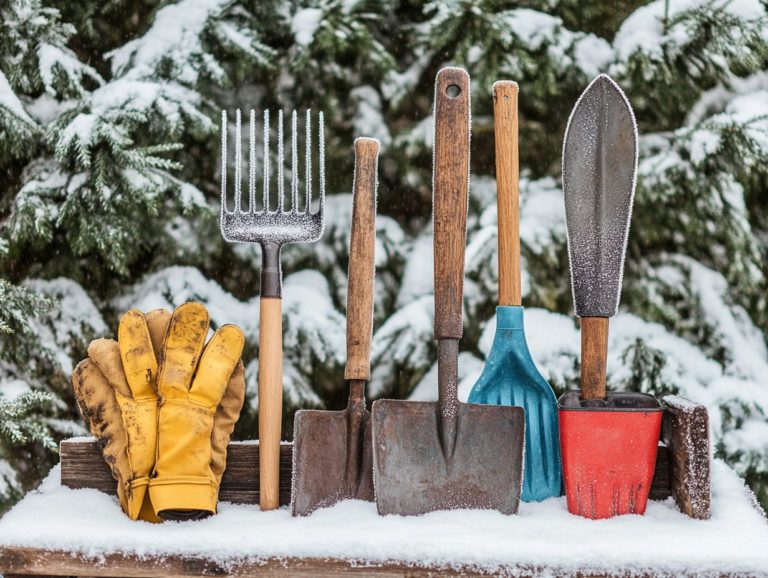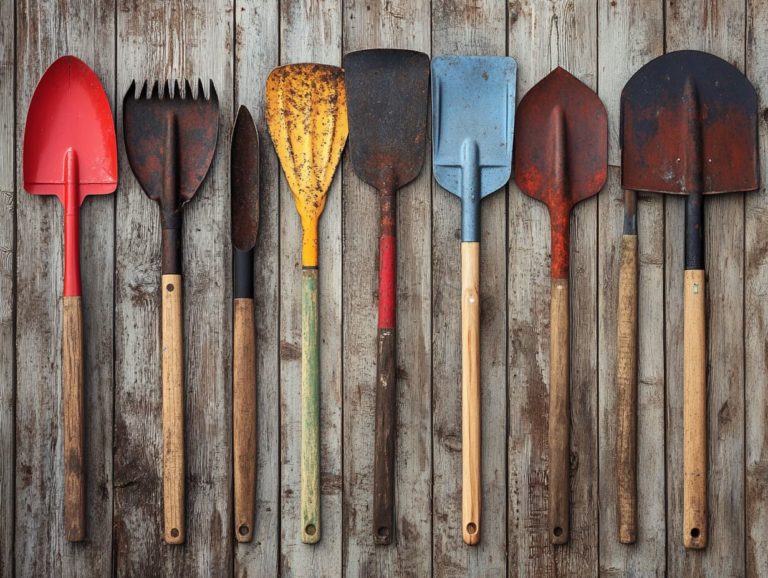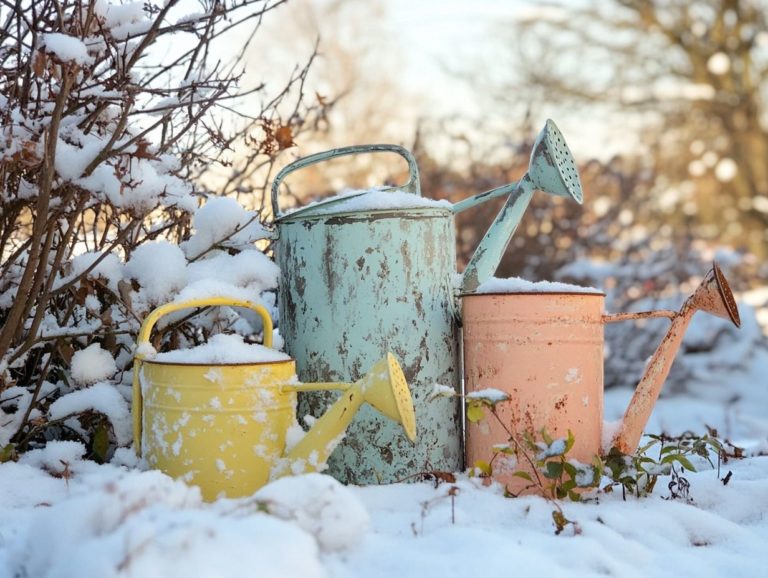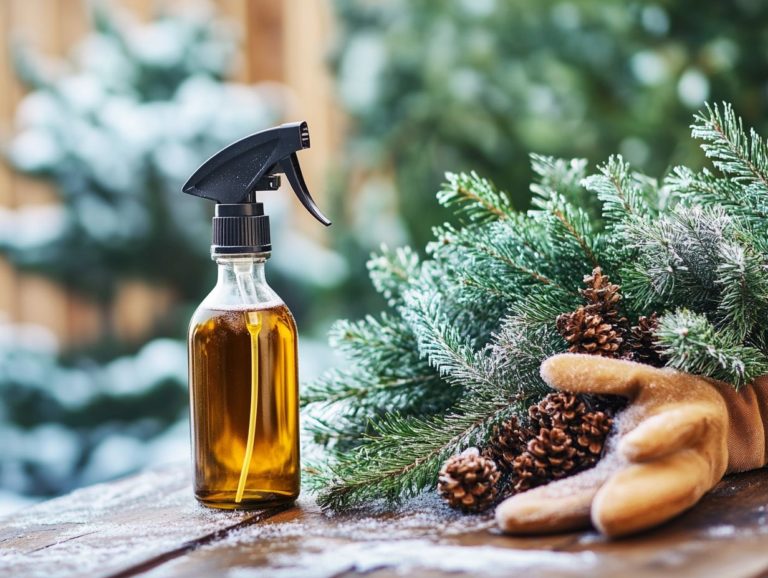How to Make Your Own Cold-Weather Gardening Tools
Gardening in cold weather presents a rewarding challenge. However, it often requires specialized tools to protect your plants and ensure effective maintenance.
This guide will help you create your own cold-weather gardening tools. You’ll find practical DIY solutions that save you money and enhance your gardening experience.
You’ll discover essential materials, detailed step-by-step instructions, and tips on proper usage and care to keep your garden thriving, even in the chill.
Explore innovative strategies to nurture your green thumb, no matter the season!
Contents
- Key Takeaways:
- DIY Solutions for Cold-Weather Gardening
- Materials and Supplies Needed
- Step-by-Step Instructions for Making Cold-Weather Tools
- Tips for Using and Maintaining Cold-Weather Gardening Tools
- Best Practices for Effective and Long-Lasting Tools
- Other Considerations for Cold-Weather Gardening
- Additional Tips and Tricks for Successful Gardening in Cold Weather
- Frequently Asked Questions
- What are some essential tools for cold-weather gardening?
- Can I use regular gardening tools in cold weather?
- How can I make my own DIY cold-weather gardening tools?
- What materials are best for cold-weather gardening tools?
- How can I maintain my cold-weather gardening tools?
- Do I need specialized tools for gardening in the snow?
Key Takeaways:

- Protect your garden from harsh winter conditions with homemade cold-weather gardening tools.
- Gather essential materials and follow step-by-step instructions to build effective tools.
- Proper maintenance and usage tips ensure the longevity and effectiveness of your tools.
Why Cold-Weather Gardening Tools Are Necessary
Cold-weather gardening tools are crucial for anyone looking to maintain a thriving garden during frosty months. This is especially true in regions like Utah, where winter can be particularly harsh. These specialized tools help you manage your garden effectively and are essential for ensuring that crops, especially those thriving in cooler temperatures, flourish despite the cold.
The superior craftsmanship of these tools enhances your gardening experience. They allow you to work efficiently, even when temperatures drop.
Using these specific tools elevates your winter gardening practices. Tasks like planting, pruning, and protecting your plants from frost damage become much more manageable. Frost blankets and row covers protect delicate crops from temperature swings, while robust hand tools help you complete tasks efficiently without disturbing the soil structure.
Cold-weather gardening tools focus on increased durability and efficiency, making them invaluable allies in overcoming winter’s unique challenges. Investing in high-quality implements, along with the top 5 accessories for cold climate gardening, boosts your productivity and fosters a resilient garden that can thrive throughout the demanding Utah winter.
DIY Solutions for Cold-Weather Gardening
Creating your own DIY garden is rewarding as you prepare for the challenges of cold-weather gardening. This approach allows you to tailor your gardening tools to meet your specific needs, which is crucial for their performance. Don’t forget to check out winter gardening tool maintenance tips to keep them in top shape.
By crafting homemade tools designed for winter gardening, you provide the attentive care your plants need to thrive during harsh months. For more tips, check out this guide on how to organize your gardening tools for winter.
Homemade Tools for Protection and Maintenance
Homemade tools for cold-weather gardening protect your plants from frost while ensuring your tools last longer. By using customized gardening techniques, you can create specialized tools like those in the top 10 must-have tools for winter gardening that safeguard your crops and simplify maintenance, especially when caring for essential blades.
For instance, consider a simple wooden frame draped with burlap as a protective cover for your tender plants, or an insulated pot designed to keep the soil warm. These homemade solutions provide targeted protection and help you avoid frequent replacements of costly commercial tools.
To ensure your tools last, make it a habit to wipe them down with a mild soap solution after each use. This simple step can prevent rust and decay. Store them in a dry space and apply linseed oil to wooden handles periodically to enhance their durability.
By taking these proactive steps, the time and energy you invest in creating and maintaining these tools will yield fruitful results throughout your gardening season.
Materials and Supplies Needed
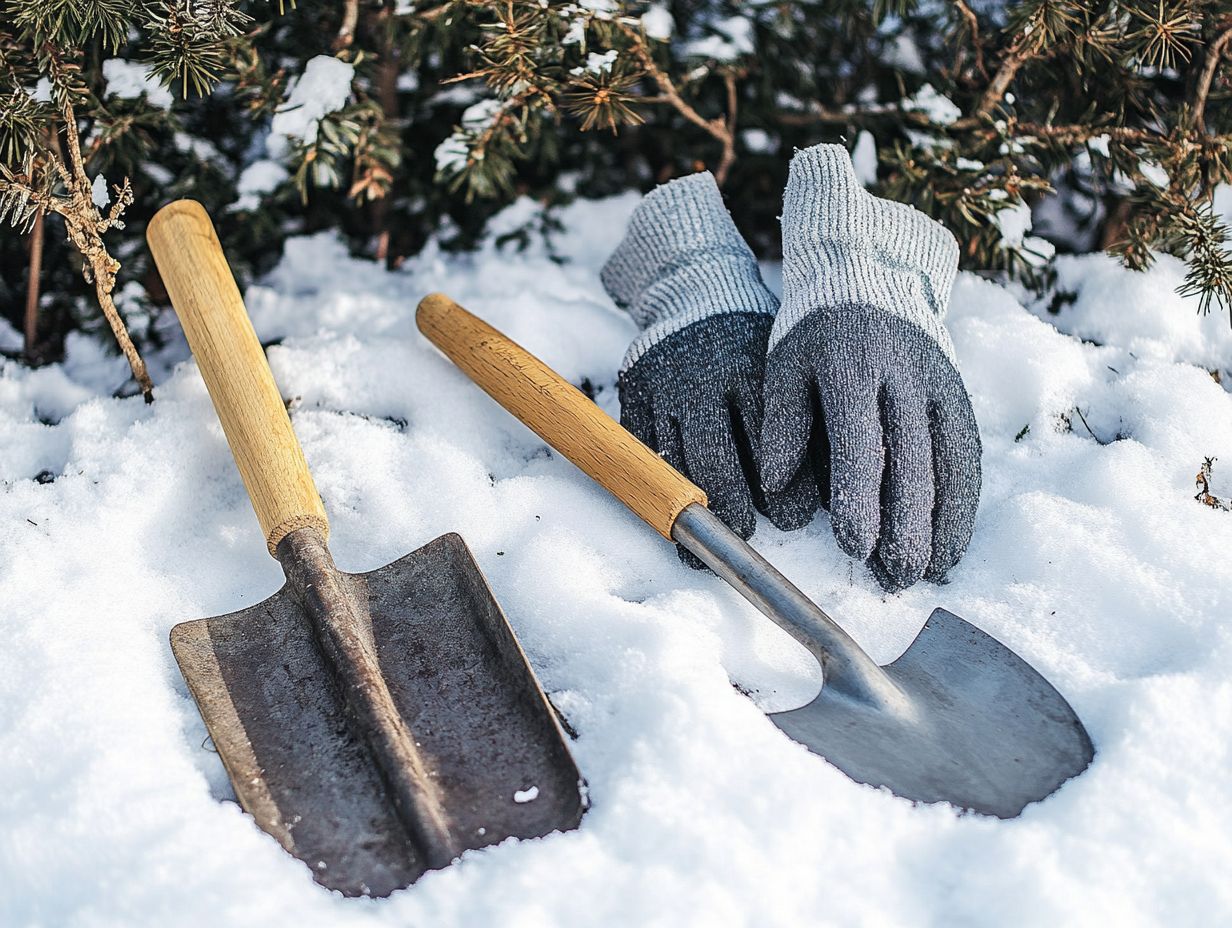
When crafting effective cold-weather gardening tools, choose your materials with precision. High carbon steel is your best friend for durability. To keep your tools in top shape, check out this guide on how to store garden tools for winter. Steel pipes add that extra layer of strength you need.
By opting for quality materials, you ensure your homemade tools can withstand the challenges of winter gardening and perform reliably season after season.
Essential Items for Building Cold-Weather Tools
To create effective cold-weather tools, gather essential items for best performance and use. Start with sturdy handles and high carbon steel blades.
Sturdy handles are a must; they provide the grip and leverage necessary to tackle tough, frozen soil. High carbon steel blades maintain their sharpness and strength even in icy conditions.
Consider adding insulated grips to prevent frostbite during extended use. A durable coating protects against rust, ensuring your tools last.
Opting for collapsible features can boost portability. This makes it easier to navigate snowy landscapes and enhances the efficiency of each gardening session.
Step-by-Step Instructions for Making Cold-Weather Tools
Crafting your own garden tools for cold-weather gardening offers an engaging journey through a series of curated steps. These instructions will help you design personalized tools that tackle the specific challenges of winter gardening, guided by the ultimate guide to cold weather gardening tools.
By incorporating thoughtful modifications, you ensure each tool meets the unique demands of the season. Elevate your gardening experience to new heights!
Detailed Guide for Building Each Tool
A comprehensive guide for building each tool is essential for creating customized gardening tools for cold-weather conditions. This guide highlights the key winter gardening supplies you need to create your perfect tools!
Breaking down the building process into manageable segments makes it easy to follow along and boosts your DIY confidence.
Start by selecting durable materials like treated wood or galvanized metals, which weather harsh elements. Joining pieces together securely will enhance your tools longevity.
You ll also benefit from tips on creatively customizing your tools. Experimenting with various designs and functionalities will improve your yields and deepen your connection to your winter gardens.
Tips for Using and Maintaining Cold-Weather Gardening Tools
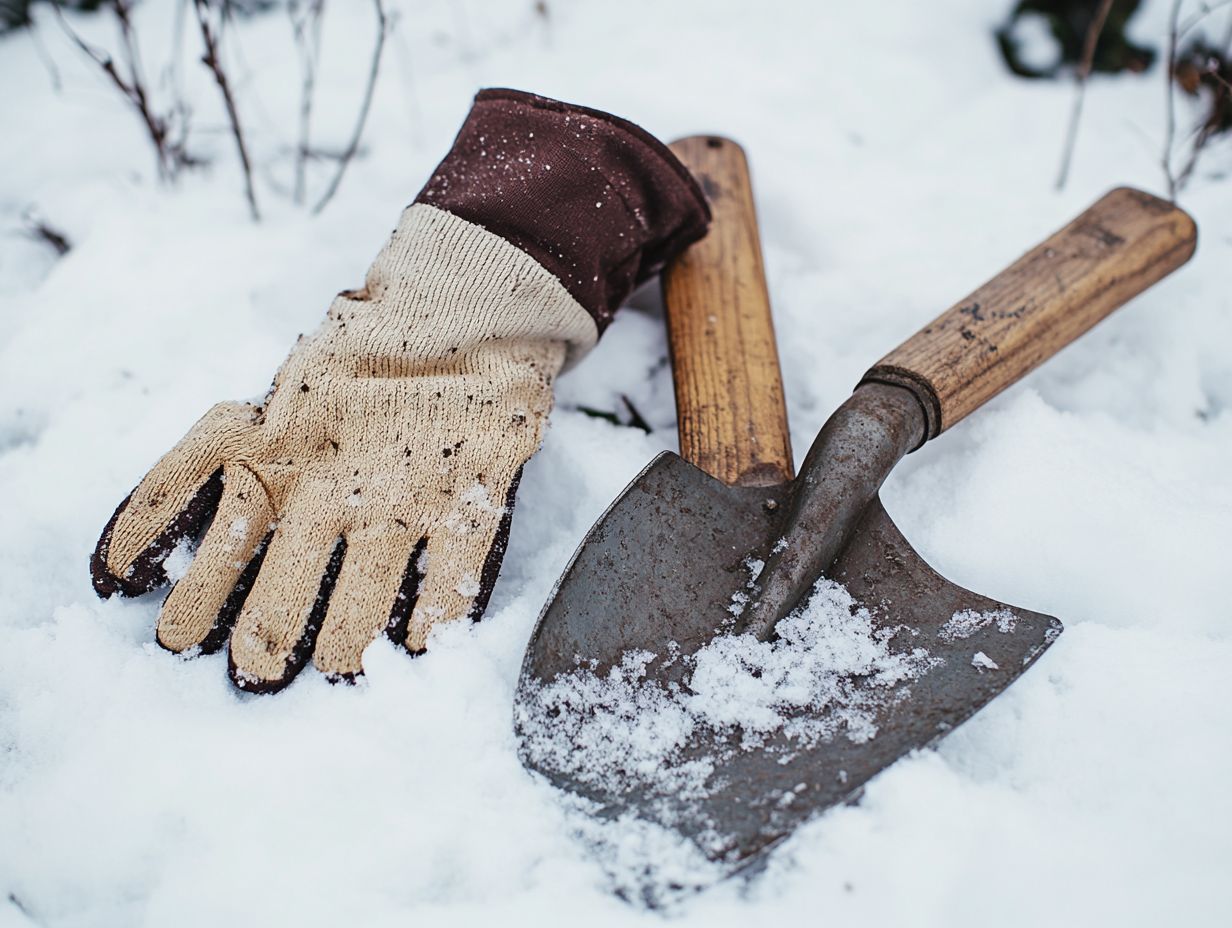
Proper use and maintenance of your cold-weather gardening tools are crucial for enhancing their longevity. This ensures optimal performance during winter gardening.
By following best practices for blade care and thoroughly cleaning your tools after each use, you can significantly extend their life. Elevate your overall gardening experience!
Don’t wait! Start maintaining your tools today for a thriving winter garden!
Feel free to share your experiences or questions about crafting your cold-weather tools!
Best Practices for Effective and Long-Lasting Tools
Implementing best practices for effective and enduring gardening tools is essential for maximizing the rewards of cold-weather gardening. By prioritizing proper care and maintenance, you can ensure that your investments yield impressive returns in terms of productivity and crop vitality.
Make it a habit to clean your tools thoroughly after each use. Dirt and moisture can lead to rust and degradation, which no gardener wants. Storing your tools in a dry, well-ventilated shed will help prevent moisture buildup. A simple, thin coat of oil on the metal parts acts as a protective barrier, extending their lifespan significantly.
Investing in high-quality materials is also a wise choice, as they typically offer better results and durability. Just as you nurture your plants with care, consistent attention to your tool maintenance will pave the way for optimal results in your garden.
Other Considerations for Cold-Weather Gardening
When you dive into cold-weather gardening, there are several key considerations that can greatly influence the success of your winter harvest and the vitality of your vegetable patch. From selecting ideal cold-weather crops plants that thrive in cooler temperatures to employing innovative gardening techniques, these elements are essential for nurturing a thriving garden, even amidst winter’s chill.
Additional Tips and Tricks for Successful Gardening in Cold Weather
Incorporating a few extra tips and tricks can elevate your winter gardening results. By understanding the nuances of growing cold-weather crops and how to shield them from harsh elements, you ll enjoy a bountiful harvest, even when temperatures drop!
Consider using row covers or cloches they’re like cozy blankets for your plants, trapping the sun’s warmth during the day and releasing it at night. Opt for hardy varieties such as kale or Brussels sprouts, which thrive in cooler temperatures and produce more resilient crops. A solid layer of mulch can work wonders too, helping to regulate soil temperature and moisture levels.
Don’t overlook the importance of regular pest checks, even in winter. A quick inspection can prevent unnoticed infestations from wreaking havoc on your carefully tended plants. Finally, cultivating a diverse array of cold-tolerant vegetables not only enhances pollination but also boosts overall soil health. With these strategies, you’ll be on your way to a thriving winter garden.
Frequently Asked Questions
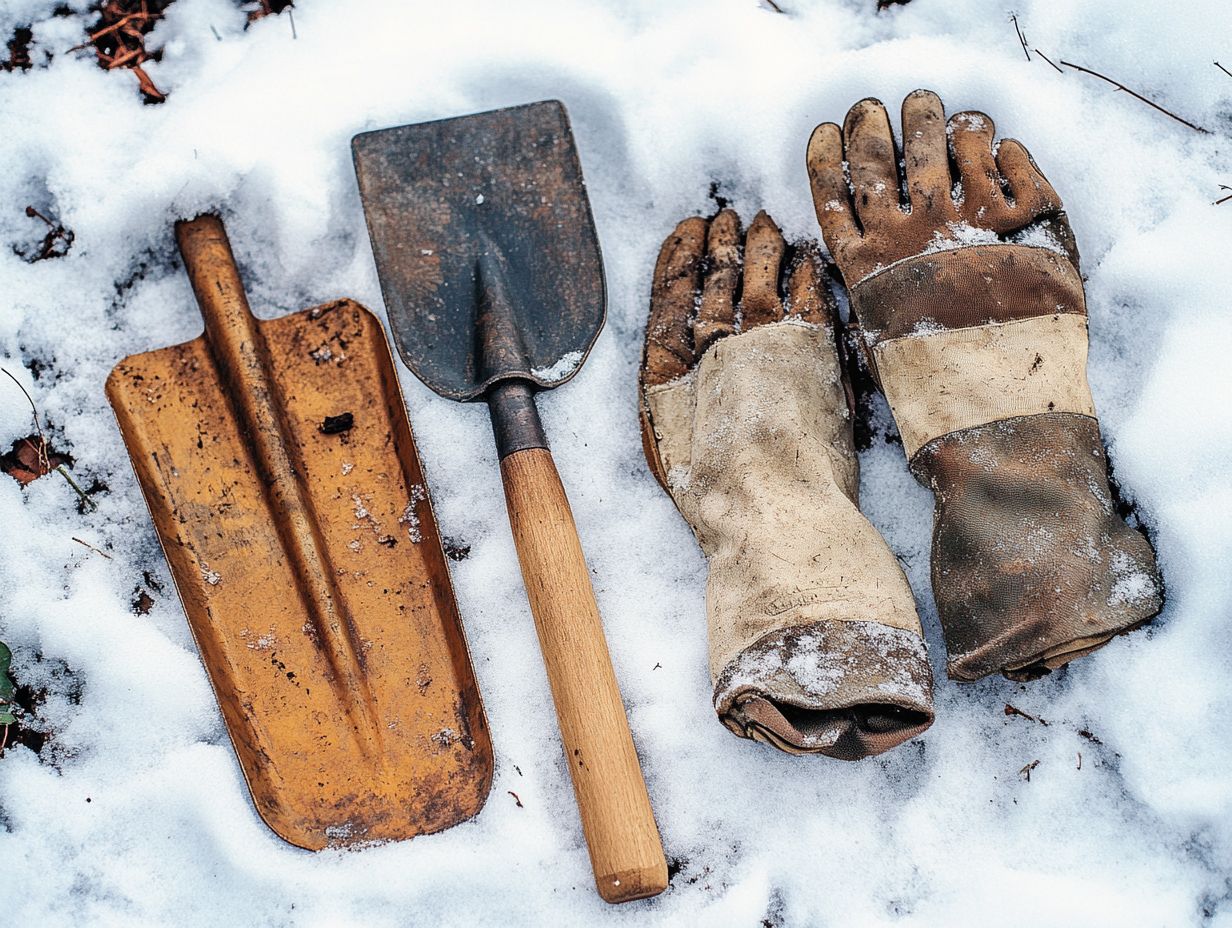
What are some essential tools for cold-weather gardening?
- Shovel
- Rake
- Garden hoe
- Hand trowel
- Pruning shears
- Watering can or hose
Can I use regular gardening tools in cold weather?
Yes, you can use regular gardening tools in cold weather, but it’s important to ensure they are durable and suitable for colder temperatures. For more insights, check out the essential guide to gardening in cold weather. Consider investing in tools with rubber or insulated handles for better grip and comfort.
How can I make my own DIY cold-weather gardening tools?
One easy DIY tool is a simple seedling protector made from plastic bottles. Cut off the bottom of a plastic bottle and place it over seedlings to protect them from frost. You can also use old broomsticks or dowels to make your own garden stakes for supporting plants.
What materials are best for cold-weather gardening tools?
For durable and long-lasting tools, opt for materials such as stainless steel or carbon steel. These materials can withstand cold temperatures and resist rust and corrosion. Avoid using plastic tools as they may become brittle and break in cold weather.
How can I maintain my cold-weather gardening tools?
To keep your tools in good condition, clean and dry them after each use. Store them in a dry place and inspect them regularly for any signs of wear or damage. Sharpen blades as needed, and oil any metal parts to prevent rust.
Do I need specialized tools for gardening in the snow?
You don t need specialized tools for gardening in the snow! However, certain tools can make your job easier.
A snow shovel with a curved or ergonomic handle can reduce strain on your back. A hand-held snow blower is also helpful for clearing light snow from plants and paths.

